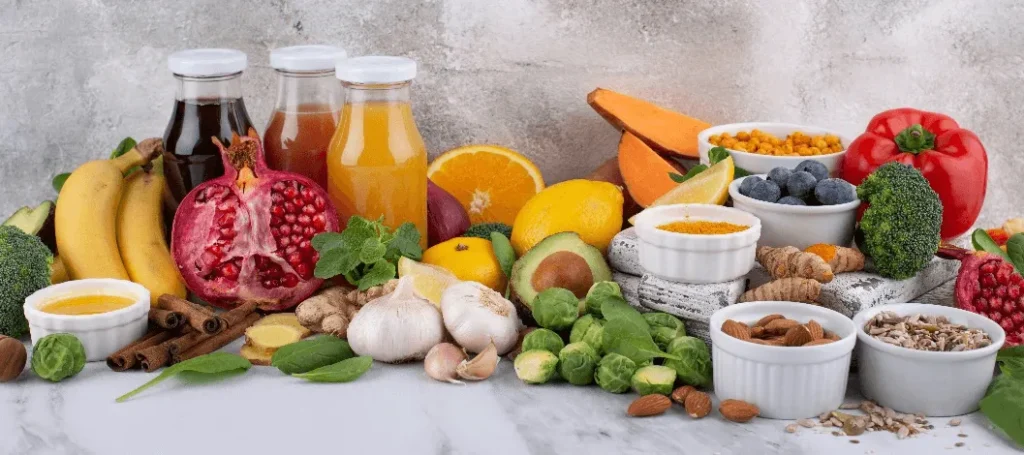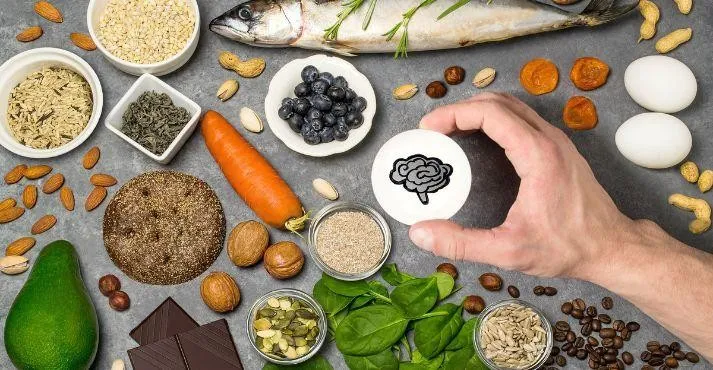In 2025, digestive health is no longer just a topic whispered about in doctors’ offices or among wellness devotees—it’s officially mainstream. Functional foods, once relegated to health food stores and niche diets, are now front and center in the American lifestyle, driven by social media trends, Gen Z’s health priorities, and a science-backed push toward gut optimization.
From fermented snacks on TikTok to prebiotic coffee at national chains, digestive wellness is enjoying its time in the spotlight. But this surge is about more than viral recipes—it reflects a broader shift in how people are eating with intention, choosing foods that do more than satisfy hunger.
🌿 What Are Functional Foods?
Functional foods are those that offer additional health benefits beyond basic nutrition. In the context of digestive wellness, these are foods formulated or naturally equipped to:
- Support gut microbiota
- Improve digestion
- Enhance nutrient absorption
- Boost immune function
Common examples include:
- Probiotic-rich items like kefir, kombucha, and yogurt
- Whole grains, garlic, onions, and bananas are good sources of prebiotic fiber.
- Fermented foods like kimchi, miso, sauerkraut, and tempeh
- Fortified products such as fiber-enriched breads or gut-supporting protein bars
The functional food market has expanded rapidly as Americans link gut health to broader wellness outcomes like mental clarity, skin health, and even emotional stability.

📈 Why the Boom Now?
1. Science Meets Awareness
The gut-brain connection, once a fringe theory, is now widely accepted in mainstream medicine. Studies increasingly show that gut bacteria influence everything from serotonin levels to inflammation and immune response.
With this research flooding the media, consumer interest has exploded. People are now seeking dietary solutions to issues like anxiety, fatigue, IBS, and chronic bloating.
2. Pandemic-Era Reset
The pandemic years pushed people toward self-care and preventive health. Many Americans discovered that what they eat directly impacts how they feel, especially under stress. Post-2020, there’s been a lasting interest in food-as-medicine—especially for digestion, which is tied to immunity.
3. TikTok, Instagram, and the Rise of Gutfluencers
Social media has been crucial. “GutTok” is a thriving subcommunity on TikTok, where influencers post gut-healing routines, “what I eat in a day” videos, and even DIY fermented food tutorials.
Aesthetic wellness is trending: users want flat stomachs, glowing skin, and less bloating—which they believe begins with a balanced gut.
4. Clean Labels and Transparency
Today’s consumers, especially Millennials and Gen Z, demand clean-label products, traceability, and plant-based ingredients. Brands have responded by designing functional foods with gut-boosting claims, and certifications like “prebiotic fiber included” are now front-of-pack marketing gold.
🛍️ Retailers and Brands Embrace the Movement
Functional foods are now big business. U.S. supermarket chains have launched entire aisles devoted to digestive health. Even fast food is catching on:
- Starbucks debuted a line of fiber-infused cold brews
- Whole Foods introduced an exclusive “gut wellness” frozen meal series
- Target and Walmart stock branded probiotic shots and kombucha mixers
Direct-to-consumer brands like Seed, Ritual Synbiotic+, and Olipop are leading the charge with scientifically formulated offerings paired with slick digital marketing and influencer collaborations.
🍳 Meal Habits Have Changed
In 2025, you’re more likely than ever to see a refrigerator stocked with:
- Fiber-rich smoothie blends with prebiotics
- DIY sauerkraut kits
- Gut-supporting teas with ginger, fennel, and licorice root
- Overnight oats and chia puddings enhanced with resistant starches and omega-3 fatty acids
Americans are increasingly building their meals around digestion, integrating more fermented, fibrous, and plant-based foods into daily life. And thanks to increased flavor profiles and convenience options, gut-friendly no longer means boring or bland.
🧠 Gut Health & Mental Health Connection
Arguably the most compelling reason for functional foods’ popularity is the gut-brain axis. The GI tract hosts about 70% of the body’s immune system and houses the enteric nervous system, often called the “second brain.”
Functional foods that improve microbiota balance are associated with:
- Better mood regulation
- Reduced anxiety symptoms
- Enhanced cognitive clarity
- Improved sleep quality
This has made digestive wellness an entry point into holistic mental health, especially among younger consumers dealing with burnout, screen fatigue, and social stress.
📊 The Numbers Speak
- The U.S. functional food market is expected to reach $120 billion by 2027, with digestive health making up over one-third of that growth.
- 1 in 2 Americans under 35 say they intentionally consume foods for gut health weekly.
- Online searches for “foods for bloating” and “gut health recipes” are at an all-time high.
💬 The Social Acceptance of Gut Talk
What was once taboo—talking about bloating, constipation, or poop—is now normalized and even trendy. Brands use emoji humor, influencers post “gut diaries,” and wellness retreats include gut reset workshops. Digestive wellness has become a lifestyle flex: it signals self-awareness, discipline, and proactive health.
🚨 Cautions and Criticisms
While the rise of functional foods has many upsides, critics warn of:
- Overhype without regulation: Not all “probiotic” or “gut-friendly” labels mean clinically significant doses or strains.
- One-size-fits-all approaches: Gut microbiomes are highly individual; what works for one may not work for all.
- Disordered eating triggers: The obsession with flat stomachs and “debloating” can veer into toxic territory, especially for those with a history of restrictive diets.
FAQs: Functional Foods & Digestive Health
1. What exactly are functional foods?
Functional foods are foods that provide health benefits beyond basic nutrition. They may be naturally nutrient-rich (like fermented foods) or fortified with beneficial ingredients (like fiber, probiotics, or omega-3s).
2. What makes a food “good for digestion”?
Digestive-friendly foods typically:
- Promote healthy gut bacteria
- Contain fiber, prebiotics, or probiotics
- Reduce inflammation or soothe the GI tract
Examples include yogurt, kefir, leafy greens, oats, and fermented vegetables.
3. How do probiotics and prebiotics differ?
- Probiotics are live beneficial bacteria found in some fermented foods and supplements.
- Prebiotics are non-digestible fibers that feed good bacteria already in your gut.
Together, they support a healthy and balanced gut microbiome.
4. Are functional foods better than supplements for digestion?
Whole foods offer multiple nutrients, fiber, and synergy that pills may lack. However, some people benefit from both—for example, using a probiotic supplement alongside a gut-friendly diet.
5. What are signs of poor digestive health?
Common signs include:
- Bloating or gas
- Irregular bowel movements
- Food sensitivities
- Fatigue after eating
- Brain fog
Improving gut health can help alleviate many of these issues.




